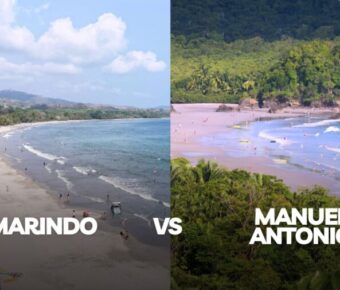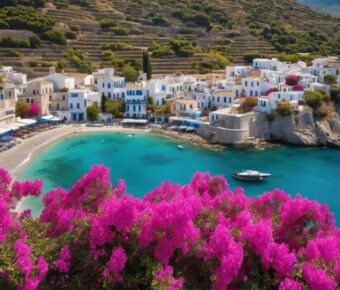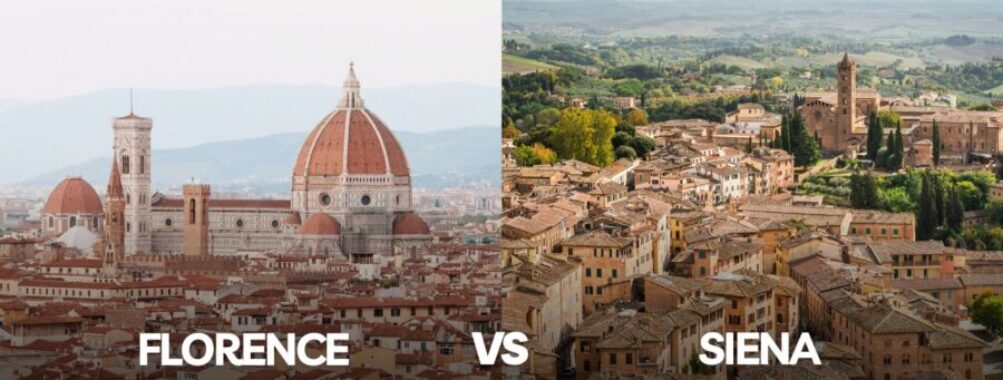
Florence vs Siena: A Local’s Guide to Tuscany’s Most Beautiful Rival Cities
Choosing between Florence and Siena feels like picking between two precious gems in Tuscany’s crown. These Italian cities offer different experiences for travelers seeking their perfect Italian adventure. Florence is the better choice for first-time visitors to Tuscany, with its world-class museums, iconic architecture, and excellent transport connections to other parts of Italy.
Each city has its own special charm. Florence dazzles with Renaissance masterpieces and grand palaces, while Siena captivates with medieval streets and a more laid-back atmosphere. The choice comes down to what type of Tuscan experience you want—Florence’s art-filled bustle or Siena’s peaceful authenticity.
Travelers looking to save money might prefer Siena. A meal out costs about €5-10 less than in Florence, and accommodation prices run about 25% lower. Siena’s smaller size means less time spent in tourist crowds and more genuine interactions with locals.
Contents
- Historical Significance
- Renaissance Influence
- Medieval Architecture
- Cultural Heritage and Traditions
- Palio di Siena
- Florence’s Artistic Legacy
- Culinary Exploration
- Local Tuscan Cuisine
- Signature Dishes
- Art, Museums, and Galleries
- The Uffizi and Accademia
- Hidden Artistic Gems
- Lifestyle and Atmosphere
- Nightlife and Entertainment
- Shopping Opportunities
- Day Trip Destinations
- From Florence
- From Siena
- Accommodations and Staying Over
- Luxury and Boutique Options
- Budget-Friendly Choices
- Travel Tips and Practical Information
- Getting Around
- Best Time to Visit
- Frequently Asked Questions
- What are the historical differences that distinguish Florence from Siena?
- Which city should be used as a base for exploring Tuscany, Florence, or Siena?
- What modes of transportation are available for traveling from Florence to Siena, and which is most recommended?
- Can you explore the essence of Siena in a day trip from Florence, and what are the must-see attractions?
- How does the cost of living and tourism in Siena compare to that in Florence?
- What are some lesser-known facts about the longtime rivalry between Florence and Siena?
- More Travel Guides
Historical Significance
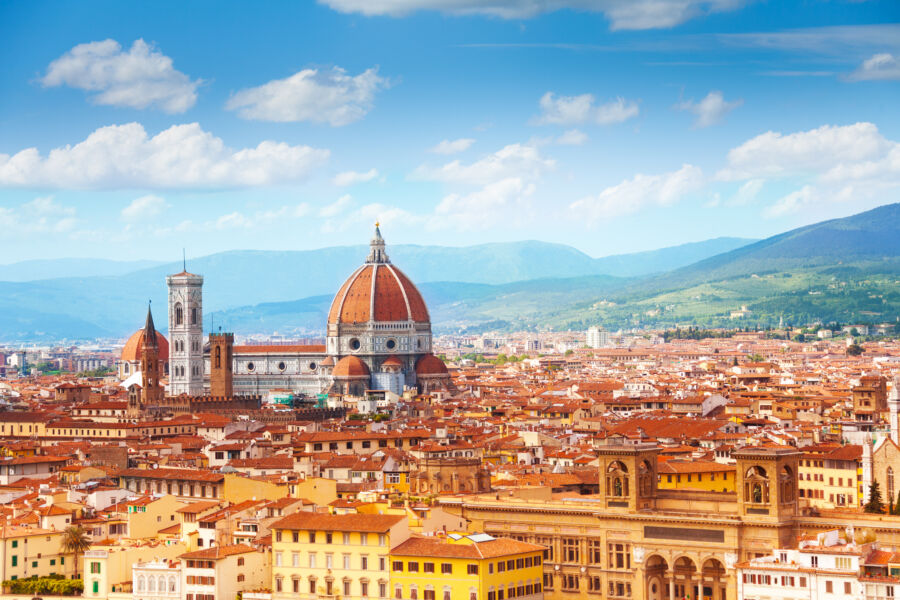
Both cities showcase different yet equally fascinating periods of Italian history, with Florence’s Renaissance grandeur contrasting against Siena’s perfectly preserved medieval character. Their intense rivalry shaped Tuscany’s artistic and architectural legacy.
Renaissance Influence
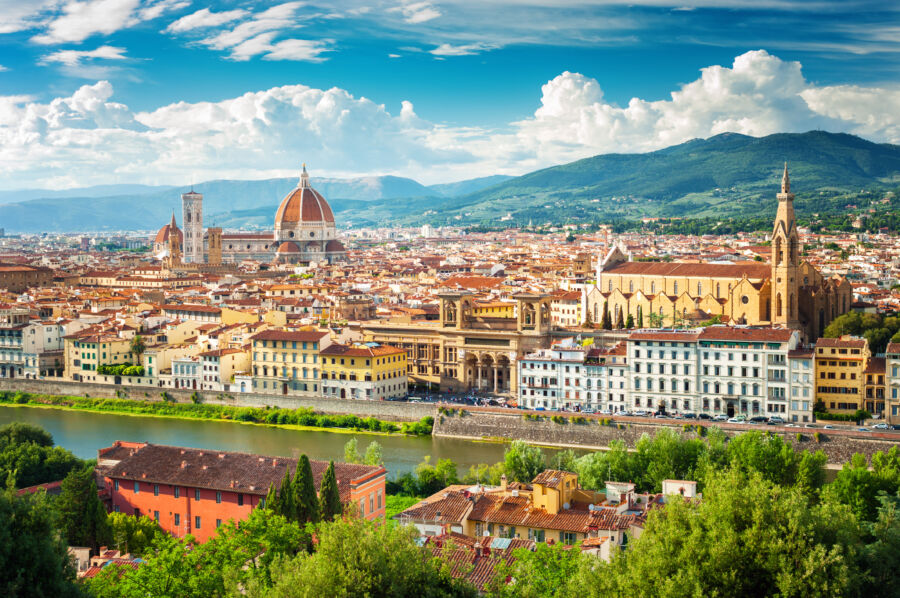
The powerful Medici family transformed Florence into Europe’s main artistic hub during the 15th century. They funded great masters like Michelangelo and Leonardo da Vinci, whose works still grace the city’s museums and churches.
The Florence Cathedral, topped by Brunelleschi’s magnificent dome, demonstrates the city’s innovative Renaissance architecture. This UNESCO World Heritage site remains one of Italy’s most visited landmarks.
Medieval Architecture
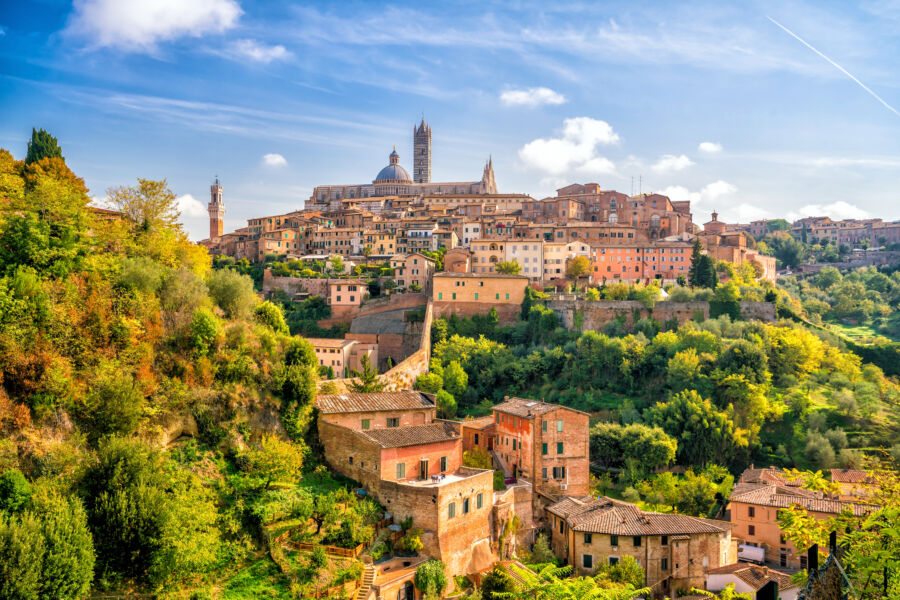
Siena kept its Gothic style while Florence embraced the Renaissance. The city’s medieval character stayed intact through the centuries, giving modern visitors a glimpse into 13th-century life.
The stunning Duomo di Siena displays some of Italy’s finest Gothic architecture. Its black and white marble stripes and intricate facade make it unique among Italian cathedrals.
The city’s narrow lanes and brick buildings transport visitors to medieval times. Most of Siena’s original architecture survived unchanged, earning it UNESCO World Heritage status.
Cultural Heritage and Traditions
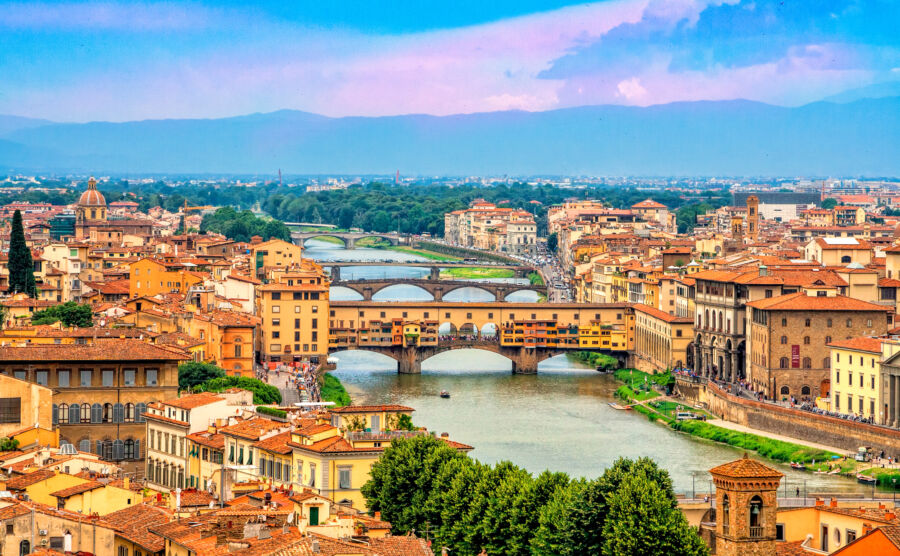
Florence and Siena showcase distinct cultural identities through art, festivals, and centuries-old traditions. Both cities keep their rich heritage alive through unique celebrations and creative expressions.
Palio di Siena
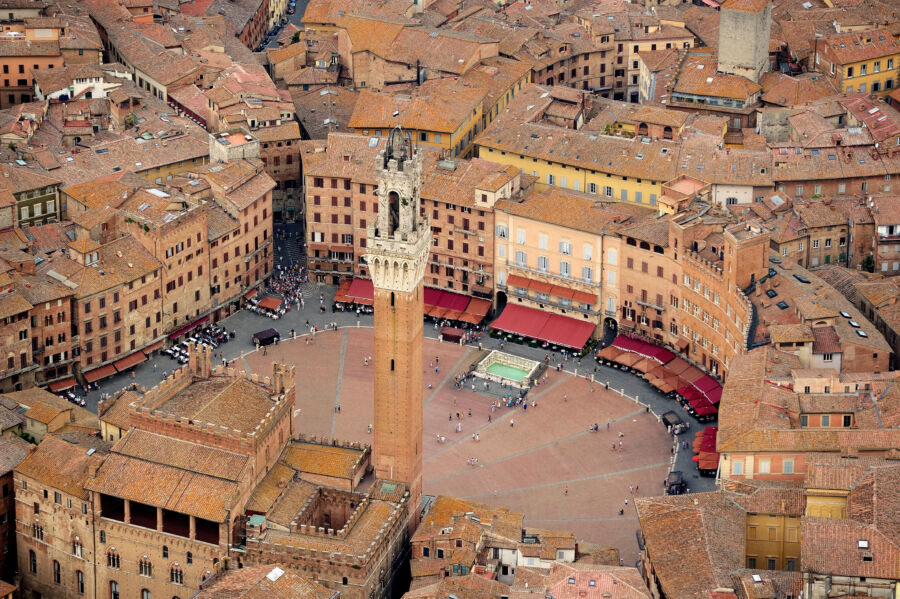
The Palio di Siena is Italy’s most famous horse race, held twice each summer in Siena’s magnificent Piazza del Campo. It pits 10 of Siena’s 17 districts (contra de) against each other in a thrilling competition that lasts just 90 seconds.
Each contrada has its emblem, colors, and patron saint. The winning district earns major bragging rights and celebrates with days of feasting and partying in the streets.
The tradition started in 1482 and goes far beyond just a horse race. Teams spend months preparing, hosting dinners, and performing blessing ceremonies. The parade before the race features over 600 people in medieval costumes.
Florence’s Artistic Legacy
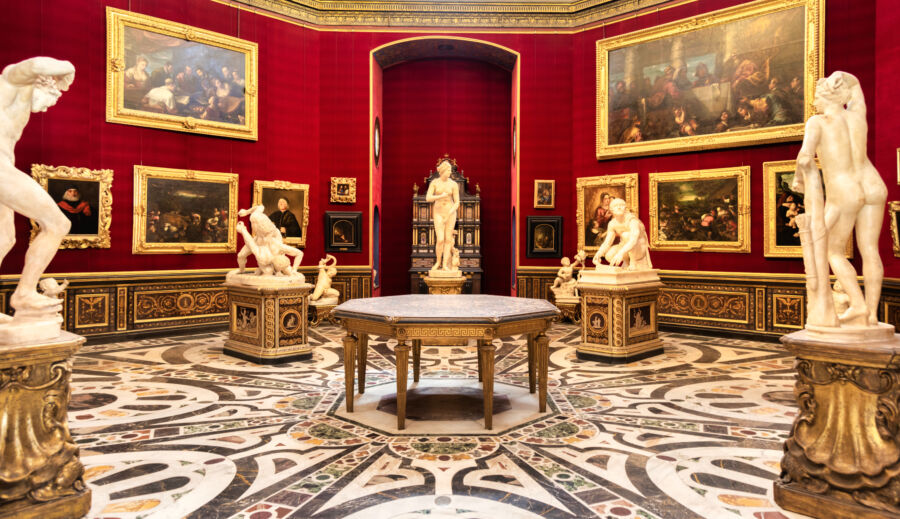
The Uffizi Gallery houses the world’s greatest Renaissance art collection, with masterpieces from Botticelli, Leonardo da Vinci, and Michelangelo. The museum welcomes over 2 million visitors yearly.
Michelangelo’s David at the Accademia Gallery is Florence’s most iconic artwork. The 17-foot marble statue took three years to complete and shows incredible anatomical detail.
Art fills Florence’s streets, too. The outdoor sculpture gallery at Piazza della Signoria displays perfect copies of famous statues, and visitors can admire Renaissance masterpieces for free.
Local artists still practice traditional crafts in workshops throughout the city’s historic center, such as leatherwork, paper marbling, and jewelry making.
Culinary Exploration

Both Florence and Siena offer amazing food experiences that showcase traditional Tuscan cooking. Each city puts its spin on regional specialties, from hearty soups to premium steaks.
Local Tuscan Cuisine

The food scenes in Florence and Siena celebrate local ingredients and time-honored recipes. Florence’s markets like Sant’Ambrogio and San Lorenzo buzz with vendors selling fresh produce, meats, and cheeses.
Siena’s smaller restaurants often serve more rustic, home-style cooking. Many places make their pasta by hand daily, especially the thick pici pasta, a local favorite.
Both cities excel at ribollita, a hearty bread and vegetable soup that started as a peasant dish. The soup tastes different in each city – Florence’s version tends to be thicker, while Siena’s is usually more broth-based.
Signature Dishes
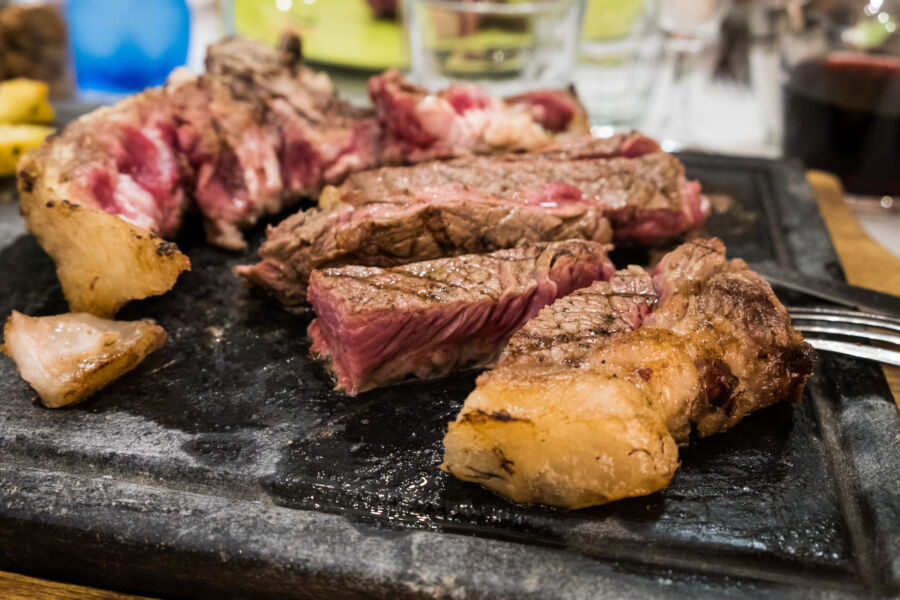
Florence’s most famous dish is bistecca alla Fiorentina, a massive T-bone steak grilled over oak coals. The meat from local Chianina cattle is served rarely with olive oil and herbs.
Siena claims panforte as its special treat. This dense fruit and nut cake dates back to medieval times. Local bakers still use traditional recipes with honey, nuts, and spices.
Both cities offer excellent food tours that let visitors taste regional wines, olive oils, and cured meats. These tours often include stops at local markets and family-run shops.
Small wine bars called enotecas dot both cities. They serve Tuscan wines paired with local cheeses and cured meats.
See Related: Florence vs Venice: Which Italian Gem Should You Visit First?
Art, Museums, and Galleries

Florence leads the artistic race with world-famous museums housing Renaissance masterpieces, while Siena’s smaller collections focus on medieval religious art and local history.
The Uffizi and Accademia
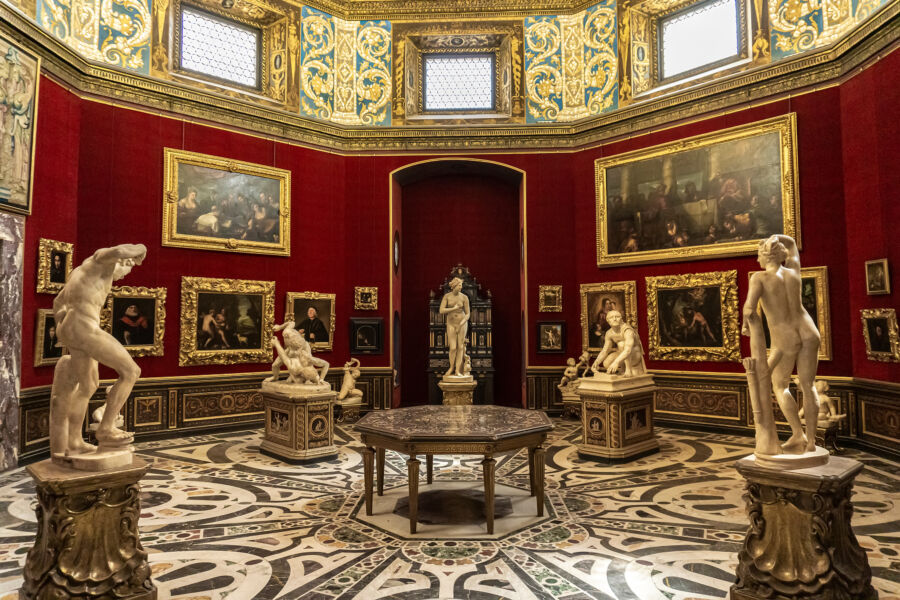
The Uffizi Gallery is Florence’s crown jewel. It’s 45+ halls display famous works like Botticelli’s Birth of Venus and da Vinci’s Annunciation. The museum requires at least 3-4 hours to explore properly.
The Galleria dell’Accademia draws crowds to see Michelangelo’s David – a 17-foot marble masterpiece that leaves visitors speechless. The museum also features interesting musical instruments and Gothic paintings.
Pro tip: Book skip-the-line tickets at least 2 weeks ahead for both museums during peak season. Morning visits tend to be less crowded.
Hidden Artistic Gems

Santa Maria Novella’s frescoes and the Bargello’s sculpture collection offer quieter alternatives to Florence’s main museums. These spots rarely have long lines.
Siena’s Pinacoteca houses stunning medieval altarpieces and Sienese school paintings. The museum offers a great view of art from the 13th and 14th centuries.
The Piccolomini Library inside Siena’s cathedral shows off amazingly colorful frescoes and illuminated manuscripts. Most tourists miss this hidden treasure.
Some smaller museums let you take photos without flash, which is a nice bonus since the major sites don’t allow pictures.
Lifestyle and Atmosphere

Florence and Siena offer distinct lifestyles shaped by their unique cultural heritage. Florence buzzes with urban energy and international flair, while Siena keeps things relaxed with its medieval charm and local traditions.
Nightlife and Entertainment
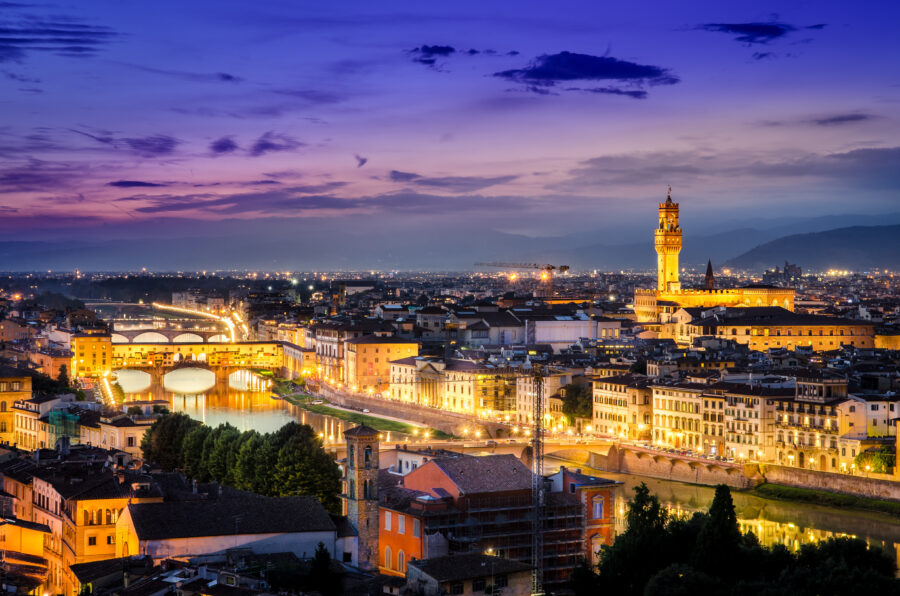
Florence sparkles after dark with countless wine bars, cocktail lounges, and live music venues scattered throughout the Santa Croce and Santo Spirito neighborhoods. Students fill the streets around Via de’ Benci, creating a lively scene that lasts until dawn.
Siena takes a more laid-back approach to nightlife. The Piazza del Campo transforms into an evening gathering spot where locals and visitors sip Tuscan wines at outdoor cafes. The city’s traditional festivals and events, like the famous Palio horse race, bring real excitement.
Small bars near the University of Siena create cozy spots for casual drinks and conversation. The atmosphere stays authentically Italian, with most venues closing earlier than Florence’s.
Shopping Opportunities
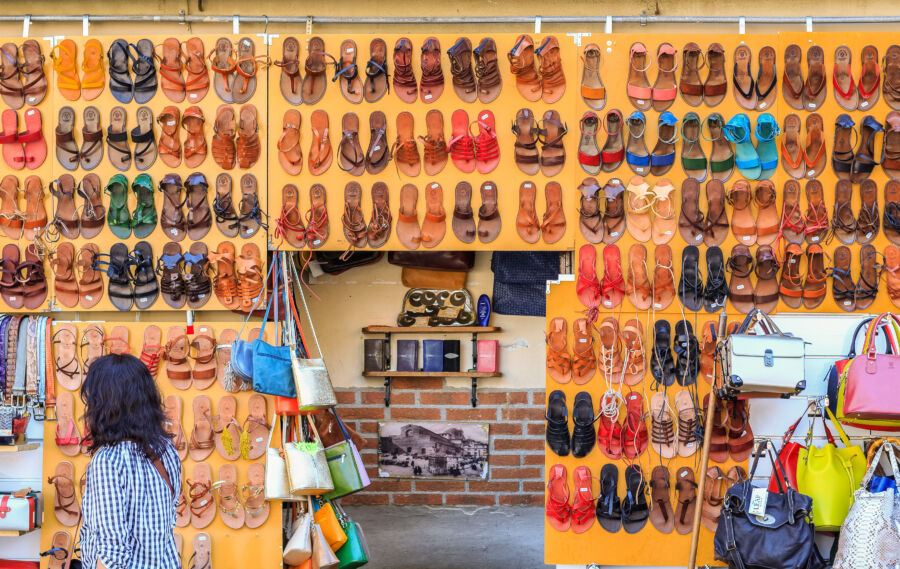
Florence shines as Tuscany’s shopping capital. The city’s leather markets and artisan workshops around San Lorenzo sell high-quality bags, jackets, and shoes. The Mercato Centrale offers fresh produce, meats, and regional specialties on the ground floor.
Designer boutiques line Via Tornabuoni, featuring Italian luxury brands like Gucci and Ferragamo. Small artisan shops in the Oltrarno district showcase handmade jewelry, paper goods, and ceramics.
Siena’s shopping scene focuses on local crafts and food products. Narrow medieval streets house family-run shops selling Tuscan wines, olive oils, and traditional ceramics. The main shopping area around Via di Città offers a mix of boutiques and souvenir stores at more reasonable prices than in Florence.
Day Trip Destinations

Florence and Siena are excellent home bases for exploring the beautiful Tuscan region. They offer easy access to charming medieval towns and stunning countryside.
From Florence
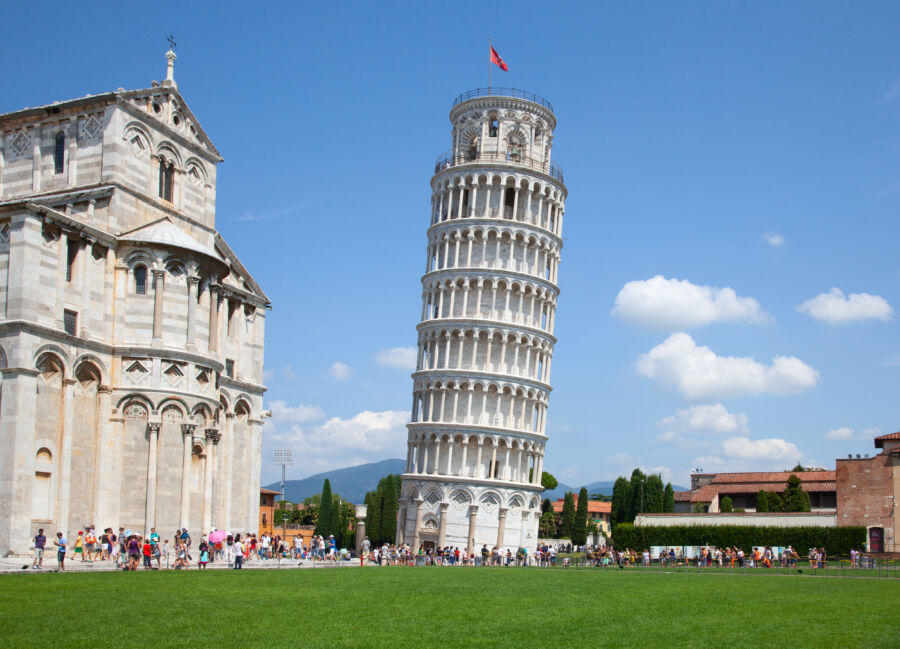
San Gimignano makes a perfect day trip with its famous medieval towers and stunning hilltop location. Trains run every hour and take about 1.5 hours each way. The town’s historic center feels like stepping back in time.
Pisa sits just an hour away by direct train. Beyond the famous Leaning Tower, you’ll find beautiful churches, lively squares, and great gelato shops away from the tourist crowds.
Lucca’s intact Renaissance walls now serve as a tree-lined walking and cycling path. The train ride takes 1.5 hours through pretty Tuscan landscapes. Don’t miss climbing the unique Guinigi Tower with oak trees growing on top.
From Siena
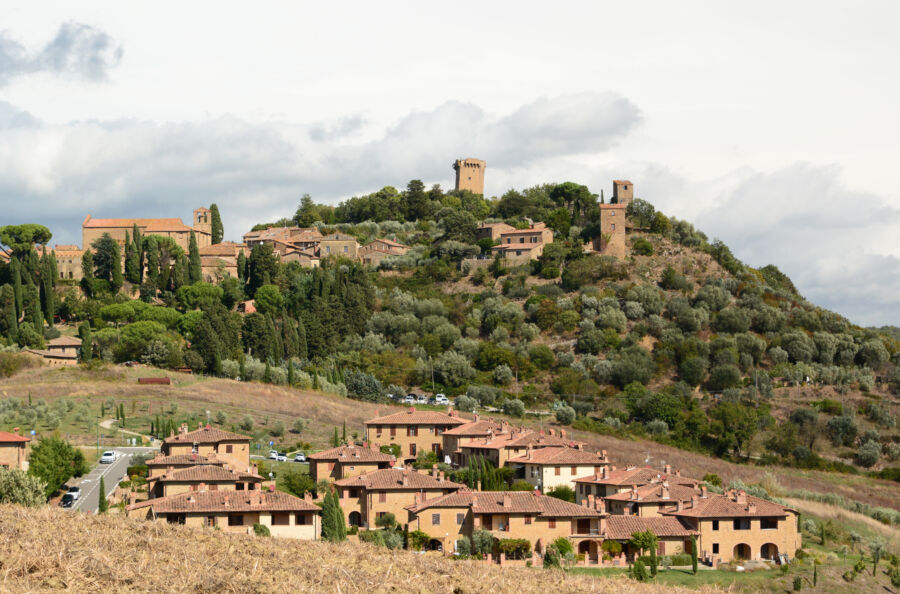
The Val d’Orcia region showcases quintessential Tuscan scenery with its rolling hills and cypress trees. Rent a car to visit charming towns like Montepulciano, known for its excellent red wines and historic cellars built into the rock.
Small group tours make it easy to explore multiple hill towns in one day. Popular stops include Montalcino, known for its famous Brunello wines, and Pienza, known for its perfect Renaissance architecture and amazing pecorino cheese.
The Abbey of Monte Oliveto Maggiore sits just 36 km south of Siena. This working monastery features incredible 15th-century frescoes and peaceful gardens where monks still make honey and herbs.
See Related: Florence vs Bologna: Which Italian Gem Offers the Ultimate Cultural Experience?
Accommodations and Staying Over

Florence and Siena offer distinct lodging experiences that match their unique characters. Florence provides numerous upscale hotels in historic buildings, while Siena features charming family-run properties.
Luxury and Boutique Options
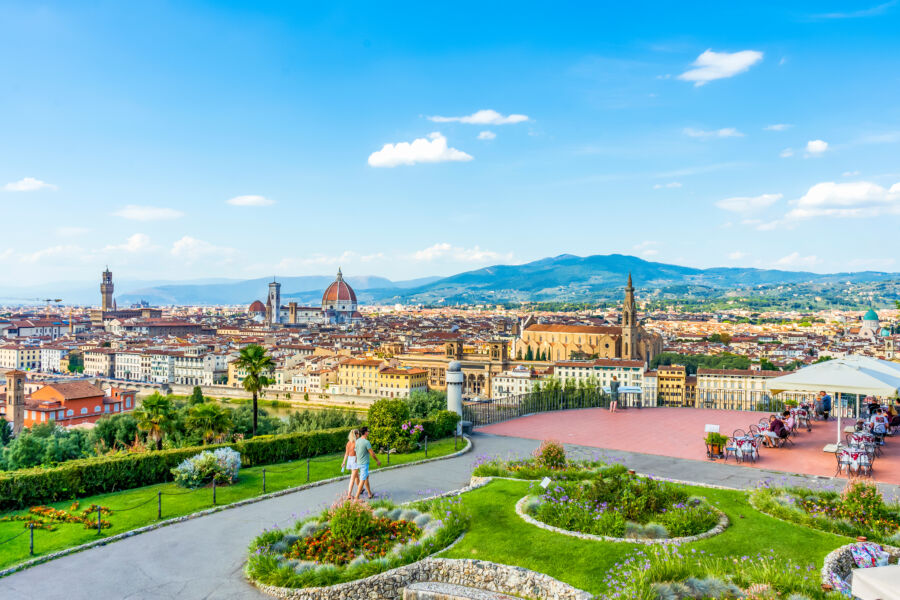
Florence shines with its luxury accommodations in renovated Renaissance palaces. Many high-end hotels sit near the Arno River, offering stunning views of Ponte Vecchio. These properties often feature original frescoes and antique furnishings.
Siena’s luxury options tend to be smaller and more intimate. The city’s historic center houses several boutique hotels in medieval buildings. Most premium accommodations cluster around Piazza del Campo.
Rooms in both cities often include restored architectural details like exposed wooden beams and stone walls. Some properties offer rooftop terraces with panoramic views.
Budget-Friendly Choices
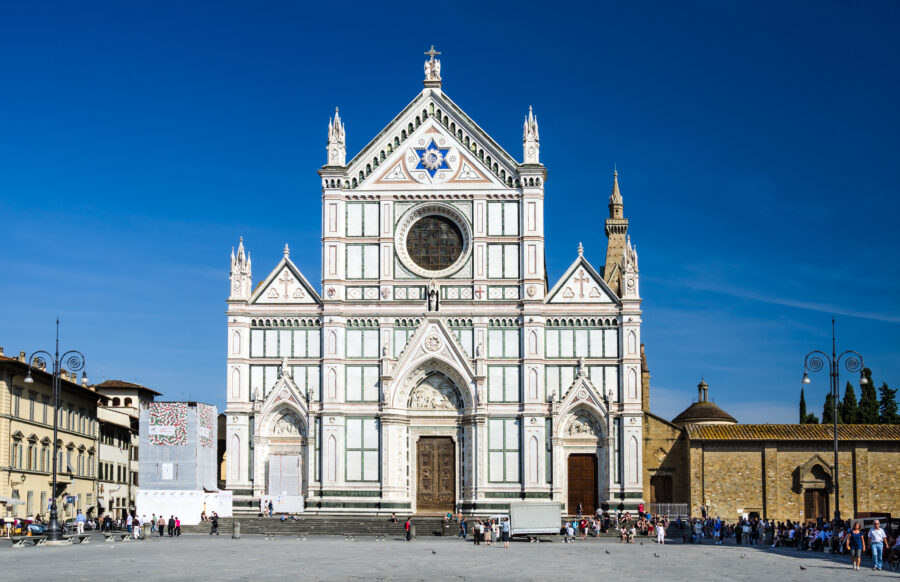
Siena wins for affordable stays. Its smaller size and fewer tourists mean lower prices year-round. Guest houses and B&Bs in Siena often cost 20-30% less than similar options in Florence.
Florence has many budget choices, but they fill up fast. The Santa Croce and Santo Spirito neighborhoods offer good value. Student areas have cheaper rooms and hostels.
Both cities feature convents and monasteries that rent rooms at reasonable rates. These religious houses provide basic but clean accommodations in central locations.
Family-run pensiones give travelers an authentic Tuscan experience. Many include breakfast and local tips from the owners.
Travel Tips and Practical Information
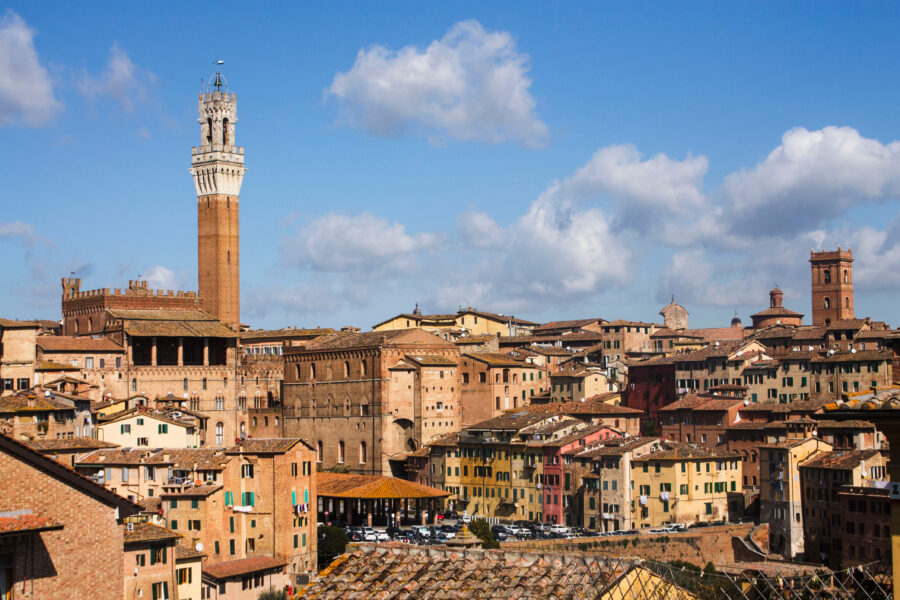
Smart planning makes visiting Florence and Siena much easier. Both cities connect well to major Italian destinations and offer different seasonal experiences.
Getting Around
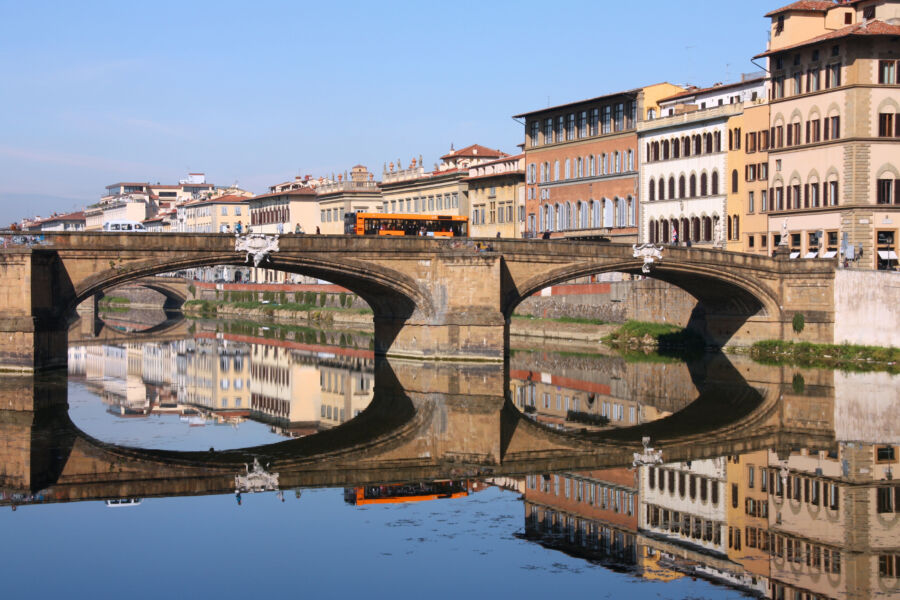
Both cities are perfect for walking. Florence’s historic center spans about 2 kilometers, while Siena’s compact medieval layout makes walking the main way to explore.
Public buses run frequently in both cities. Book sightseeing tours to see multiple spots in one day.
Florence has two train stations. Santa Maria Novella is right in the center, making day trips to Rome and Venice simple. Siena’s train station is outside the city walls, and buses run to the center every 15 minutes.
Taxis wait at designated stands in both cities – don’t expect to hail one on the street. Save the local taxi numbers in your phone before arriving.
Best Time to Visit

Spring (April-May) and fall (September-October) bring mild weather and smaller crowds. These seasons offer the best mix of comfortable temperatures and reasonable hotel rates.
Summer draws the biggest crowds. July and August see temperatures above 30°C (86°F) and long lines at major sites. Find cheap flights by booking 3-4 months ahead for summer visits.
Winter offers lower prices and shorter lines. Many hotels cut rates by 30-50% from November through March. Pack warm clothes – temperatures can drop near freezing.
Visit Siena in July or August to catch the famous Palio horse race. Book accommodations months ahead if planning to attend.
See Related: Rome vs Florence: Which Italian Gem Steals the Show?
Frequently Asked Questions

These essential questions help travelers decide between Florence and Siena. They cover everything from transportation options to hidden cultural gems in both cities.
What are the historical differences that distinguish Florence from Siena?
Florence grew into a powerful Renaissance city led by the wealthy Medici family. The city became a center for art, banking, and trade during the 1400s and 1500s.
Siena kept its medieval character after losing power to Florence in 1555. The city’s Gothic architecture and narrow streets show how life looked during the Middle Ages.
Which city should be used as a base for exploring Tuscany, Florence, or Siena?
Florence offers more train connections and organized tours to other parts of Tuscany. The city has lots of hotels and restaurants near the main train station.
Siena gives easier access to southern Tuscany‘s wine regions and hill towns. The smaller size means less traffic when driving in and out of the city.
What modes of transportation are available for traveling from Florence to Siena, and which is most recommended?
Direct trains run between Florence and Siena every hour. The trip takes about 90 minutes and costs around €10.
Buses leave from Florence’s SITA station and take 75 minutes. Many travelers prefer the bus since it drops off closer to Siena’s city center.
Driving takes about an hour on the highway, but parking in both cities can be tricky and expensive.
Can you explore the essence of Siena in a day trip from Florence, and what are the must-see attractions?
A day trip lets you see Siena’s main sights like the striped Duomo cathedral and the shell-shaped Piazza del Campo, the main square.
Try to time your visit with the afternoon passeggiata when locals stroll through the streets. Stop at a local cafe to watch city life unfold.
How does the cost of living and tourism in Siena compare to that in Florence?
Hotels and restaurants cost 15-20% less in Siena compared to Florence. Tourist attractions also tend to have lower entrance fees.
Florence receives nearly 16 million visitors annually, while Siena receives about 3 million. The smaller crowds in Siena often mean a more relaxed experience.
What are some lesser-known facts about the longtime rivalry between Florence and Siena?
The rivalry started in the 1200s when both cities fought to control trade routes. They still compete through their universities, sports teams, and local pride.
The twice-yearly Palio horse race in Siena celebrates beating Florence in historic battles. Each district’s horse represents medieval military companies.


